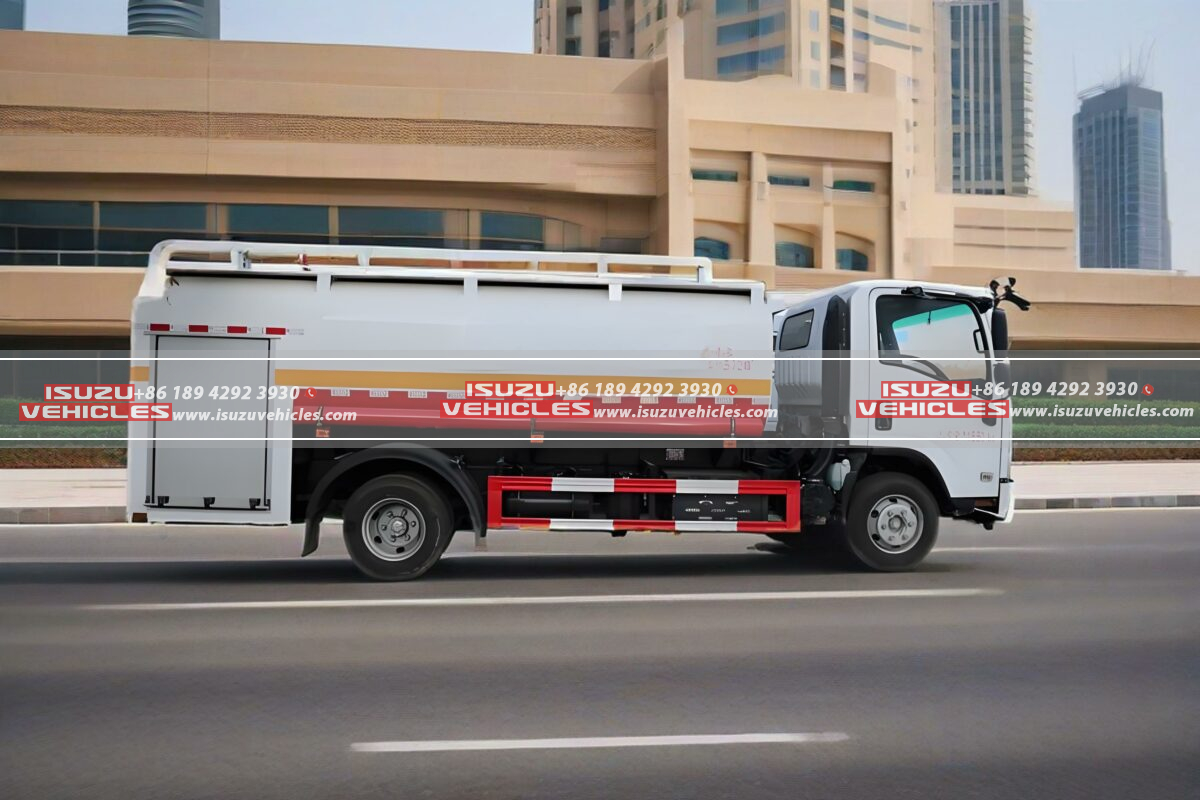In a decisive move toward realizing its Zero-Carbon Urban Ecosystems, NEOM has integrated 42 ISUZU Sprinkler Trucks into its desert greening infrastructure, marking the largest deployment of climate-adaptive irrigation vehicles in the Gulf Cooperation Council (GCC). This $36 million contract between ISUZU Vehicles and Saudi Amana Contracting establishes a scalable framework for combating desertification across NEOM’s 26,500 km² development zone. The trucks’ AI-driven precision irrigation capabilities enable 95% reduction in water waste compared to conventional systems – a critical efficiency metric in a region averaging just 70mm annual rainfall.
Engineering Resilience – The Hybrid Powertrain & AI Irrigation Ecosystem
Intelligent Water Management Architecture
Built on ISUZU’s reinforced FVZ heavy-duty chassis, the trucks combine a 5.2L turbo-diesel engine with a 120kW electric motor-generator, enabling silent zero-emission operation during nightly watering cycles within residential sectors. The true innovation lies in the integrated Hydra-Sense AI platform, which processes multispectral satellite data, subsurface moisture probes, and hyperlocal weather forecasts to optimize irrigation.
Key Subsystems & Performance Metrics:
- Dynamic Soil Hydration Mapping: LiDAR-equipped drones scan terrain topology daily, adjusting spray patterns to prevent runoff on NEOM’s 12° maximum incline roads
- Phased-Array Nozzle Control: 1,800 independently programmable nozzles deliver 0.1–22 liters/m² with ±3% accuracy, accommodating 127 native plant species’ needs
- Predictive Wind Compensation: Ultrasonic anemometers trigger automatic droplet size modulation during frequent shamal winds, maintaining 94% targeting precision
Thermal Mitigation Engineering
To withstand NEOM’s 52°C summer temperatures, the trucks feature:
- Vacuum-insulated 20,000L stainless steel tanks, reducing water temperature rise to <0.8°C/hour
- Ceramic-coated hydraulic lines prevent fluid degradation during peak solar loading
- Regenerative braking energy recovery powering coolant circulation during stationary operations
Strategic Implementation – Partnership Model & Scalable Impact
The Saudi Amana-ISUZU Alliance
This deployment leverages Saudi Amana Contracting’s 10-year desert afforestation expertise across Riyadh and Jeddah megaprojects, combined with ISUZU’s GCC-certified hybrid drivetrain technology. The operational framework includes:
| Phase | Timeline | Coverage Area | Water Savings |
|---|---|---|---|
| Coastal Mangrove Belt | Q3 2025–Q1 2026 | 28 km shoreline | 18 million liters/year |
| OXAGON Industrial Buffer | Q2 2026–Q4 2026 | 1,200 hectares | 42 million liters/year |
| THE LINE Vertical Habitat | 2027–2029 | 170 km linear urban corridor | 210 million liters/year |
Workforce Development Integration
The contract mandates technology transfer to Saudi nationals through:
- ISUZU-certified technician programs at Tabuk University
- AI irrigation algorithm apprenticeships at NEOM’s Cognitive City Observatory
- 35% local content requirement for maintenance components by 2028
The Greening Multiplier Effect – Fleet Ecosystem Synergies
Beyond Irrigation: Integrated Dust Control & Infrastructure Protection
The sprinkler trucks coordinate with other ISUZU specialized vehicles to create holistic microclimate management:
- ISUZU Sweeper Trucks: Deploying electrostatic dust suppression systems behind irrigation routes, capturing airborne particulates before they compromise solar farm efficiency
- ISUZU Vacuum Trucks: Rapid-response units removing sediment from drainage networks during rare flash floods, leveraging shared terrain data from sprinkler fleets
Carbon Accounting & Water Recycling Convergence
Each truck’s operational data feeds into NEOM’s central Environmental Intelligence Platform, enabling unprecedented sustainability metrics:
- Carbon Sequestration Tracking: Sensors measure biomass accretion from irrigated zones, offsetting 7.2 tons CO₂ per hectare annually
- Closed-Loop Hydrology: 87% of runoff captured by permeable pavements is redirected to central treatment facilities, supplementing NEOM’s non-potable water reserves
With Phase 1 already establishing 16 micro-oases along NEOM’s primary transport corridors, this fleet represents more than machinery – it’s the hydraulic catalyst transforming hyper-arid landscapes into livable biomes. Saudi Amana’s project director, Faisal Al-Rashidi, confirms expansion protocols are activated: “The same AI-driven chassis platform will underpin our 2026 deployment of ISUZU hydrogen fuel-cell terrain vehicles for high-altitude afforestation.”
